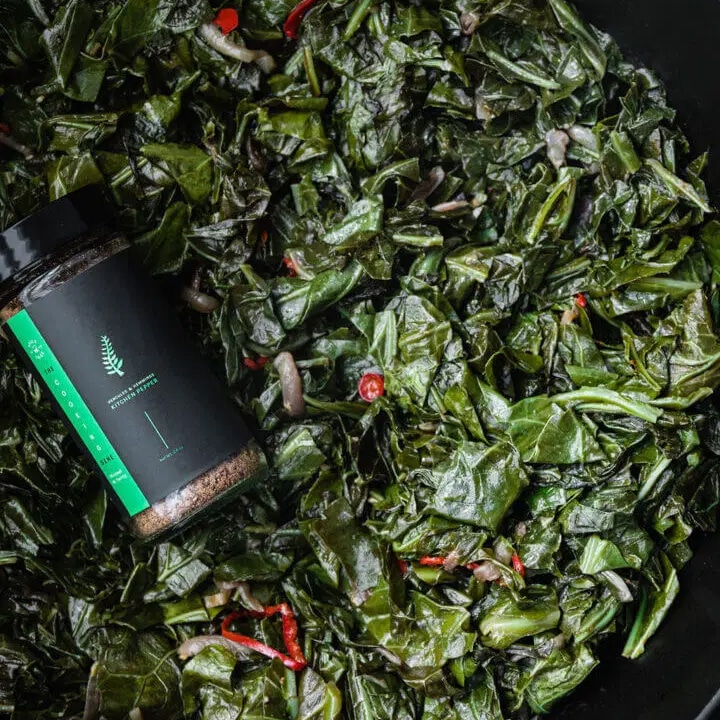Chef Michael W. Twitty's Koshersoul Collard Greens
“One of the greatest joys of writing The Cooking Gene was introducing folks to kitchen pepper, an 18th century American descendant of the quatres epices, a Medieval spice mixture that harnessed the flavors of Africa, the Middle East, and south and east Asia. Some of those same spices were also prominent in West Africa, while others were comparable to local spices gathered and used in everyday cooking. To colonial Americans kitchen pepper was a versatile way to add flavor to dishes from every day to the celebratory. For Black cooks on the eastern seaboard into the interior and along the southern coast, kitchen pepper reigned for two centuries as a mixture of sweet and pungent spices that give depth and savor to simple comfort food. Imagine a pinch or two in mashed potatoes or gravy in place of black pepper in a recipe or a pot of stock. Kitchen pepper helps elevate and vary home-cooked, especially Southern, meals.
Hercules (Washington) and James Hemings were two of America’s greatest early chefs, and they were both born enslaved on Virginia tobacco plantations and each labored for one of the two most well-known figures of the American Revolution and its aftermath, George Washington and Thomas Jefferson, respectively. Hercules, a celebrated chef, cooked for Washington both at Mount Vernon and at the Philadelphia residence where Washington served part of his presidency. He was a man of fine dress and manners and an entrepreneur. He liberated himself on Washington’s birthday and we believe made it to New York where he lived out his days as a free man.
James Hemings, brother to Sally Hemings and half brother to Jefferson’s wife, was trained to cook at the age of 19 in France. He became literate, multilingual and mastered the haute cuisine of the French court. Upon returning to America, James labored for seven years to train his brother to earn his emancipation from Jefferson, and spent years traveling in Europe and cooking up and down the eastern seaboard. James Hemings can easily be described as America’s first master chef, with many of his culinary creations merging his training with the ingredients not only of early America but those rooted in his African-Virginian heritage.”
Serving Size: 2-6
Ingredients
- 1/4 cup canola oil
- 1 cup of red onion cut into thin slices
- 1 long red cayenne pepper cut into thin rings
- 1 tsp of crushed garlic
- 1 tsp of crushed ginger
- 1 vegetable bullion or chicken flavored bullion cube
- 1 tsp of Hercules and Hemmings Kitchen Pepper
- 2 tablespoons of lime juice 2 tsp of coconut sugar
- 1 teaspoon of smoked paprika
- 3 cups of vegetable stock
- 4 pounds of collards, stemmed, trimmed and cut into long thin strips
Directions
- Heat oil in a large pot over medium heat, after a few minutes, toss in the onion slices, and hopefully, they will make the telltale light sizzle and begin to sweat. Add the red pepper, garlic, ginger, broth powder, and kitchen pepper and slowly sweat on a low heat for 10 minutes, stirring when necessary.
- Raise the heat to medium-high. Add the thin strips of collard green handful by handful, stirring and adjusting as necessary. With each batch of 3 handfuls quick cook for about 5 minutes. When all the collards have been incorporated, add the vegetable stock, allow the collards to come to a boil, but then lower the heat so that the pot settles into a slow bubble and add lime juice, coconut sugar, and smoked paprika.
- Cover and cook on a low simmer for 45 minutes. Remove with a slotted spoon and serve over cooked rice or grits.


